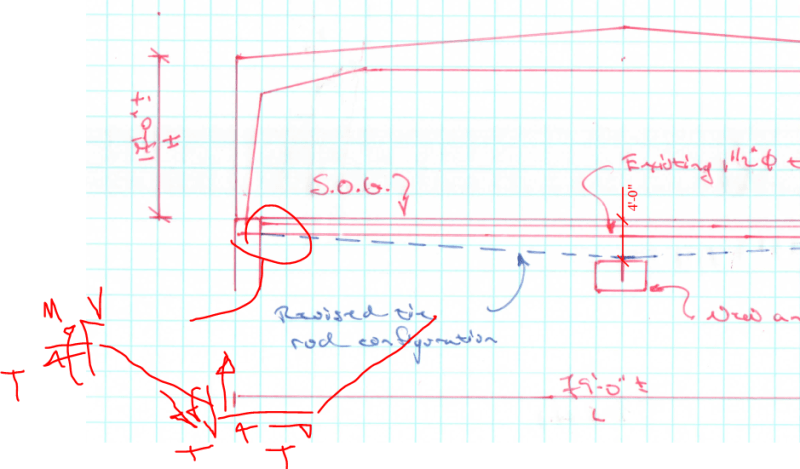-
1
- #1
I have a client who owns a metal building which is currently being renovated. I was asked to work on a different portion of the project and made a visit to the site to assess conditions pertinent to the work that I was performing. While I was onsite, I had noticed that the client had demolished the existing slab on grade. I gave a stern warning to the owner regarding tie rods which fell on deaf ears.
This week a received a call from the owner saying that while they were installing a trench drain in the middle of the building, they had the building tie rods and proceeded to rip them out (this is why we shouldn’t install tie rods people). Luckily, they only damaged the rods in the middle of the building so there is something at each end. I told the client that they needed to be repaired/replaced in like kind with new rods. The requesting an alternative solution which doesn’t interfere with their proposed trench drain (to save a nickel they are going to spend $100).
In the attached sketch you will find a proposed revised layout for the tie rods together with some back of the envelope calculations to figure the force in the tie rod (which comes out extremely close considering I am using a somewhat large DL). I don’t particularly care for making modifications to the rods, but don’t see any other way to accommodate the owners’ requirements. Has anyone made modifications to tie rods like this before?
Code = IBC 2015
This week a received a call from the owner saying that while they were installing a trench drain in the middle of the building, they had the building tie rods and proceeded to rip them out (this is why we shouldn’t install tie rods people). Luckily, they only damaged the rods in the middle of the building so there is something at each end. I told the client that they needed to be repaired/replaced in like kind with new rods. The requesting an alternative solution which doesn’t interfere with their proposed trench drain (to save a nickel they are going to spend $100).
In the attached sketch you will find a proposed revised layout for the tie rods together with some back of the envelope calculations to figure the force in the tie rod (which comes out extremely close considering I am using a somewhat large DL). I don’t particularly care for making modifications to the rods, but don’t see any other way to accommodate the owners’ requirements. Has anyone made modifications to tie rods like this before?
Code = IBC 2015


